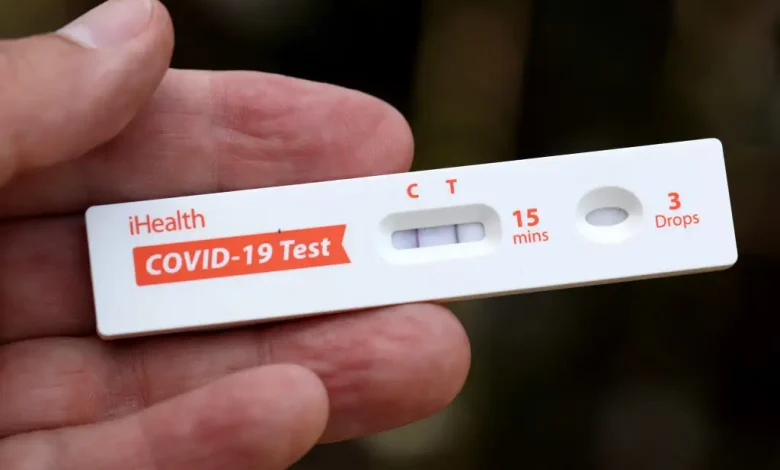A summer wave of Covid-19 has arrived in the US

CNN — Covid-In the US, 19 levels have been climbing for weeks as new variations fuel what has turned into a yearly summer boom.
Since the US public health emergency ended more than a year ago, Covid-19 surveillance has been drastically reduced; severe outcomes are based on representative samples of the population, and individual cases are no longer counted. Nevertheless, the data that is currently available indicates a steady upward trend.
Based on data from the US Centers for Disease Control and Prevention, infections are likely increasing in at least 38 states. Viral activity is still comparatively low, according to wastewater surveillance, but hospitalizations and fatalities are nevertheless rising.
According to the CDC, Covid-19 levels are particularly high in the West and the South, where virus levels have returned to what they were in February.
Warm, humid environments are conducive to the virus’s ability to multiply and survive. Dr. Robert Hopkins, medical director of the National Foundation for Infectious Diseases, a nonprofit public health group, stated that “that fits with what we’re seeing.” “It’s hot and steamy in the South and the West right now.”
Although the summer spike is now a well-known cyclical trend, doctors caution that the coronavirus is still highly unexpected.
Hopkins stated, “I think it’s still a little early to say what the pattern is.” “We have seen a summer bump as well as a winter increase, the peaks have been a little bit lower, and a large portion of the population has had some exposure to the virus.” It’s too soon to tell, though, whether that pattern will hold, whether the illness will spread throughout the year, or whether it will only appear during a specific period of time.
According to data from WastewaterSCAN, a national sewage surveillance network run by Stanford University and Emory University, this summer’s wave began several weeks earlier than the previous one and has now peaked at a level comparable to that of the previous summer.
“It is yet unclear if this will be the highest point of this surge,” stated Dr. Marlene Wolfe, WastewaterSCAN program director and assistant professor of environmental health at Emory.
“We are constantly attempting to analyze the possible seasonality with Covid as well as the potential effects of novel variants that could emerge and cause these spikes that we observe more frequently than we do with influenza and RSV,” the spokesperson stated.
The JN.1 virus variety that propelled this winter’s spike has been surpassed in recent months by more recent offshoots. These so-called FLiRT variants, an abbreviation for the locations of the amino acid mutations that the virus has acquired, contain modifications in certain areas that enable them to elude the body’s defenses and in other areas that increase their transmissibility. According to CDC data, two of them, KP.3 and KP.2, currently account for more than half of new Covid infections in the US.
This autumn, a revised vaccine is anticipated.
The FDA approved a plan earlier this month to modify the Covid-19 vaccinations to make them more effective against the coronavirus’s JN.1 lineage. However, the organization eventually revised its own assessment. Due in part to the “recent rise in cases,” vaccine producers were encouraged to concentrate on the KP.2 strain if at all possible.
Dr. Jerry Weir, head of the Division of Viral Products in the Office of Vaccines Research and Review at the FDA’s Center for Biologics Evaluation and Research, stated to an independent advisory committee prior to the initial recommendation that “JN.1 has continued to evolve, and it makes it somewhat difficult to pick the particular specific strain to be used.”
It is expected that the new vaccinations, some of which may shift to target KP.2, would be made accessible somewhere between mid-August and late September. That’s probably after this summer’s wave has subsided, but it’s enough time to provide protection during the winter respiratory virus season.
For the 2024–2025 season, the CDC advised on Thursday that all individuals six months of age and above get the most recent version of the Covid-19 vaccination. The vote of the independent advisory committee of the agency is reflected in the suggestion.
As the goal is to lower the overall incidence of sickness, Dr. Marcus Plescia, chief medical officer of the Association of State and Territorial Health Officials, told CNN that it makes sense to have the vaccination at the same time as you’re expecting the flu and RSV.
According to Plescia, protection from Covid-19 vaccinations diminishes with time, and the optimal time to receive the injection is during periods when there have historically been greater and longer-lasting peaks. As opposed to flu and RSV, Covid-19 doesn’t go away; it’s a contagious disease.
He remarked, “You never get a break.” We do have a respite from the illness and RSV. You finish the season and move on to something else. You can get ready for the subsequent one. [Covid] seems to be there all the time.
The most recent CDC report states that flu and RSV counts are still low in the US. However, vaccination rates against all three primary respiratory viruses declined during the winter, and the CDC experts also discussed recommendations for vaccine coverage against RSV and flu in anticipation of the following season.
The CDC revised its guidelines on Wednesday regarding who should receive the RSV vaccination. Everyone 75 years of age and above, as well as those ages 60 to 74 who are more vulnerable to serious disease, are advised to have the RSV vaccine in preparation for the forthcoming respiratory virus season.
According to the EPA, the modifications are intended to “simplify RSV vaccine decision-making for clinicians and the public.”
Plescia stated that “people need to remember that there are things you can do to reduce your risk” when it comes to infectious respiratory infections. And the most important one is getting immunized.




